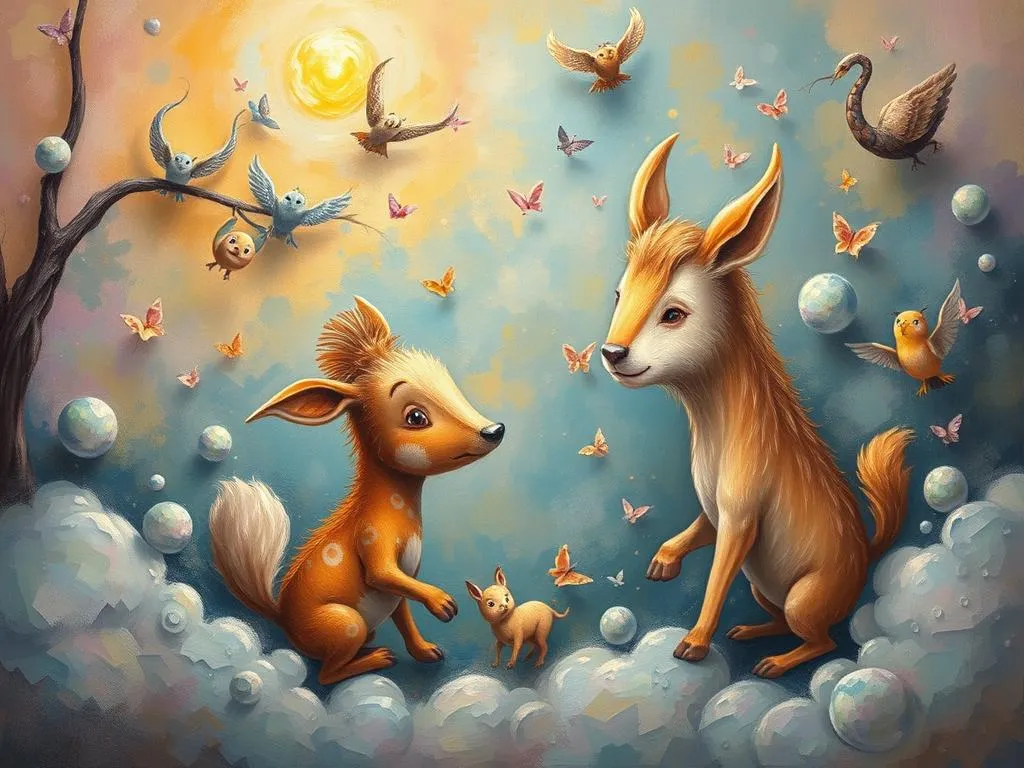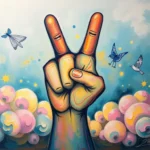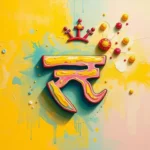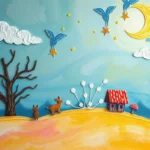
Introduction
Dreams have long fascinated humanity, serving as windows into our subconscious mind. Among the myriad of dream themes, animal encounters stand out for their rich tapestry of symbolism and meaning. These dreams often evoke strong emotions and can leave a lasting impression upon waking. They intrigue many people because animals, as archetypes of various human qualities, can reflect aspects of our personality, instincts, and even unresolved issues. Understanding the symbolism behind animal encounters can provide profound insights into our inner world, encouraging personal growth and self-awareness.
Symbolism and Meaning
When we delve into the symbolism of animals in dreams, we find that each creature carries a unique significance. Animals are often seen as manifestations of our instincts, emotions, and deeper desires. For instance, a lion may symbolize courage and power, while a rabbit could represent vulnerability or a desire for nurturing. The context of the dream plays a crucial role in deciphering these symbols.
Common Animals and Their Meanings:
– Dogs: Often seen as symbols of loyalty and friendship, dreaming of a dog might reflect your relationships or your innate need for companionship. If the dog behaves aggressively, it could indicate issues of trust or fear in your waking life.
– Cats: Cats are frequently associated with independence, intuition, and mystery. A dream about a cat could suggest a need for self-reliance or a connection to your more feminine qualities, such as creativity and intuition.
– Birds: Birds often symbolize freedom and perspective. A soaring bird can represent aspirations, while a trapped bird may signify feelings of confinement or restriction in your real life.
– Snakes: Often seen as symbols of transformation and healing, snakes in dreams can also evoke fear or anxiety. They may indicate hidden fears, repressed emotions, or the need to confront something in your life.
From a psychological standpoint, Carl Jung viewed animal symbols as representations of the collective unconscious. He believed that these symbols connect us to universal archetypes and can reveal deeper truths about ourselves. Meanwhile, the Freudian perspective may interpret animals as manifestations of repressed desires or instincts.
The cultural context also plays a significant role in dream interpretation. For instance, in some cultures, owls are revered as symbols of wisdom, while in others, they may be seen as harbingers of death. This diversity highlights the importance of personal associations and experiences when interpreting animal symbols in dreams.
Key Scenarios and Variations
The meaning of animal encounters can shift dramatically depending on the scenario within the dream. Here are a few variations to consider:
Chasing or Being Chased: If you find yourself being chased by an animal, this may indicate avoidance of certain feelings or situations in your waking life. Conversely, if you are the one doing the chasing, it may suggest a pursuit of your instincts or desires. The type of animal involved can provide additional insights—chasing a wolf might symbolize a confrontation with primal instincts, while pursuing a butterfly could represent a desire for beauty and lightness.
Talking Animals: Dreaming of animals that communicate with you can suggest a need to pay attention to your instincts or intuition. A wise owl sharing advice may indicate guidance from your inner self, while a pet dog may speak to comfort and reassurance you seek in your life.
Transformations: Dreams where animals transform into humans or vice versa can signify a deep-seated change within yourself. This could symbolize the integration of different aspects of your personality or a transition in your life. For instance, a caterpillar turning into a butterfly represents personal growth and transformation, while a person turning into a wolf may indicate a struggle with one’s primal instincts.
Animal Attacks: If you experience an aggressive animal in your dream, it may reflect feelings of vulnerability or fear in your waking life. Understanding the specific animal’s characteristics can help you identify what aspect of your life feels threatening. An attack from a bear might suggest an overwhelming sense of fear or powerlessness, while a swarm of bees could indicate anxiety stemming from multiple pressures.
Animals in Groups: Dreaming of animals in packs or herds can illustrate feelings of community or belonging. However, if the animals appear aggressive or chaotic, this may reflect feelings of being overwhelmed by societal pressures or conflict within a group setting.
Each scenario offers a unique lens through which to view our subconscious thoughts and feelings. By considering the context and emotional response within the dream, we can gain more nuanced interpretations.
Real-Life Connections and Takeaways
Connecting animal encounters in dreams to real-life situations can offer profound insights. Consider reflecting on the following aspects:
Personal Associations: Begin by considering your personal feelings towards the specific animal in your dream. Did you feel fear, joy, or curiosity? Your emotional response can provide clues to what the animal represents in your life. For instance, if you have a pet cat and dream of a cat chasing you, it may indicate a need to confront feelings related to independence or nurturing.
Current Life Circumstances: Reflect on your current life circumstances and challenges. Are there situations that evoke feelings similar to those you experienced in the dream? For example, if you dream of a fierce lion, consider whether you are facing a challenge that requires courage or assertiveness in your waking life.
Intuitive Guidance: Animals are often seen as symbols of intuition and instinct. Pay attention to any intuitive nudges or feelings you experience upon waking. If you dream of an owl, consider what wisdom or insight you might need to embrace in your life.
Self-Reflection Practices: To deepen your understanding of animal encounters in dreams, you might engage in journaling or meditation. Write down the details of your dream, including the animal, your feelings, and any significant events that occurred. This practice can help you uncover layers of meaning and connect the dream to your waking life.
Seek Meaning in Relationships: If the dream involves other people or animals, consider how these figures relate to your waking relationships. For example, if a dog in your dream represents loyalty, think about whether you feel secure in your friendships or if there are trust issues that need addressing.
By actively engaging in self-reflection and exploring these connections, you can gain deeper insights into your dreams and understand how they resonate with your daily life. Dreams serve as mirrors, reflecting our subconscious thoughts and feelings, and animal encounters can illuminate the complexities of our inner world.
Conclusion
Animal encounters in dreams are rich with symbolism and potential meanings. By exploring the various interpretations and scenarios, we can uncover valuable insights into our emotions, instincts, and personal growth. These dreams can serve as guides, encouraging us to confront our fears, embrace our desires, and acknowledge the deeper aspects of our psyche.
As you reflect on your own dreams, consider the animals that appear and the feelings they evoke. What messages might they hold for you? Remember that the interpretation of dreams is a deeply personal journey, and by connecting these encounters to your waking life, you can foster greater self-awareness and understanding. Embrace the wisdom of your dreams and let them guide you on your path to self-discovery.







